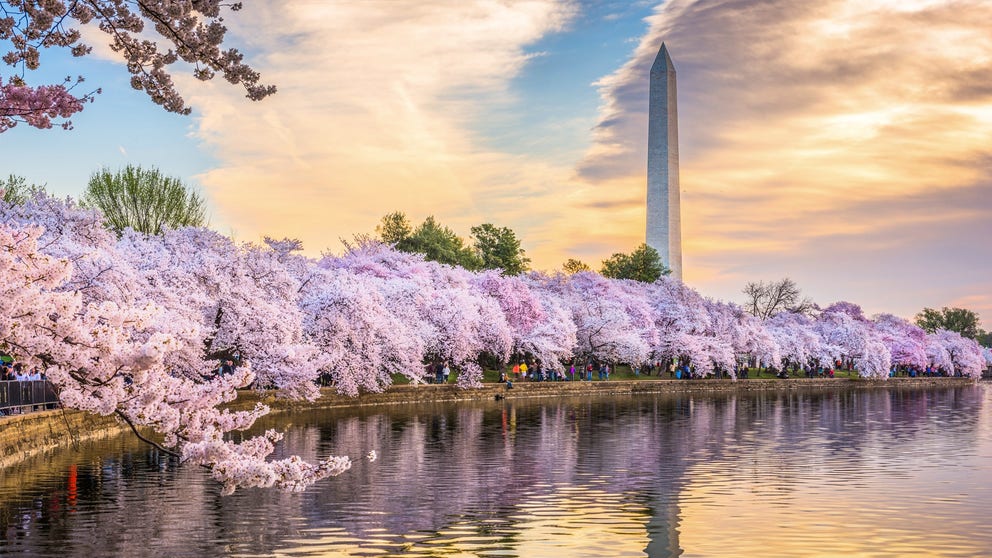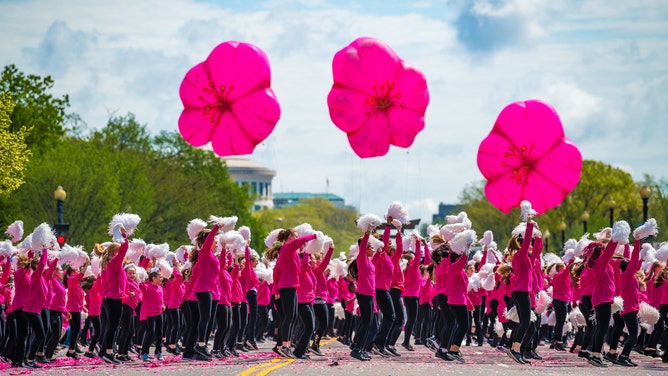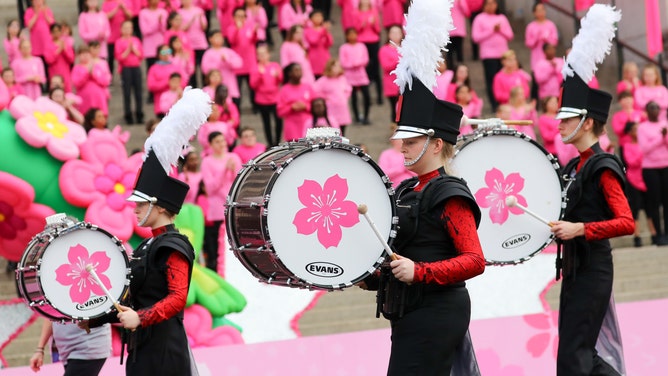How DC's cherry blossoms are a living valentine from Japan
The history of DC's cherry blossoms began more than 100 years ago, when Japan gave the U.S. 6,000 cherry trees as a sign of friendship.
How Washington, DC got its famous cherry blossom trees
In 1912, Japan gifted 3,000 flowering cherry trees to Washington, DC. Today, the National Cherry Blossom Festival honors that gift of friendship.
Every spring, Washington trades out its red, white and blue for pastel pink.
Cherry trees that dot the nation’s capital burst into blooms, surrounding the city monuments and streets with clouds of whisper-pink cherry blossoms.
"It is a time where Washington, D.C., is in bloom, not just with the trees, but with the enthusiasm and excitement and the sense of hope and renewal," said Diana Mayhew, president and CEO of the National Cherry Blossom Festival.
Celebrated each year by the National Cherry Blossom Festival, this stunning showcase of spring is actually a living valentine — one given to the U.S. by Japan more than a century ago and continues to thrive today.
How the first cherry blossoms arrived in the Beltway
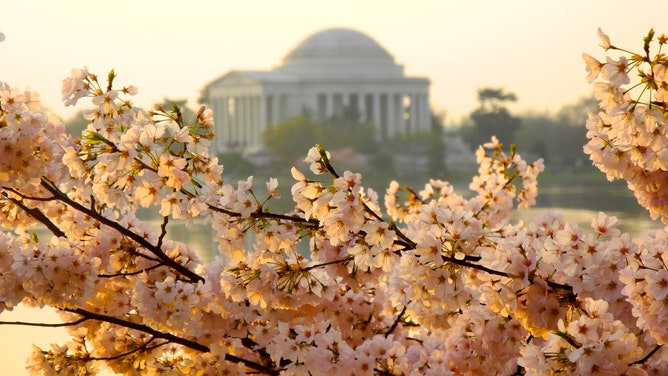
Sunrise kisses cherry blossoms, with the Jefferson Memorial in the background.
(Steve Piacente / National Cherry Blossom Festival)
"The cherry blossom trees are one of the greatest gifts that any country has ever given to the United States," said Ambassador John Malott, advisor to the National Cherry Blossom Festival and past president of the Japan America Society of Washington, D.C.
BLOOMS OR BUST: HOW WEATHER CAN AFFECT DC'S CHERRY BLOSSOMS
According to Malott, the movement to bring cherry trees to the nation’s capital began in the late 19th century and involved a few key players.
One of whom was plant explorer and U.S. Department of Agriculture official David Fairchild.
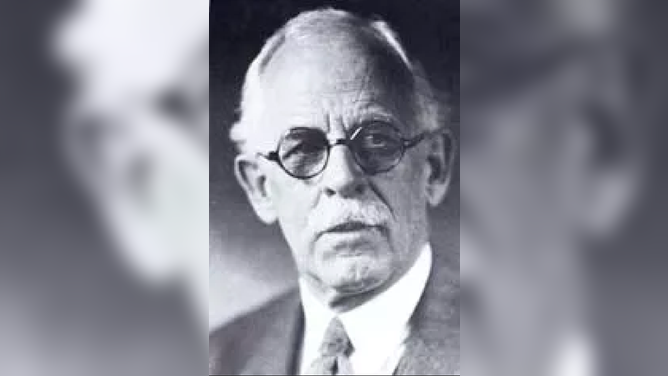
Portrait of David Fairchild. He helped bring Japanese cherry blossoms to Washington, D.C. in the early 20th century.
(U.S. National Arboretum / FOX Weather)
According to the National Park Service, Fairchild imported cherry trees from Japan and planted them on his property near Washington to see whether they'd thrive.
The experiment was a success, and Fairchild and his family began to promote the flowering cherry trees as the "ideal" type of tree to be planted in the nation's capital, the NPS said.
Another person who promoted the planting of Japanese cherry trees in the nation's capital was Eliza Scidmore.
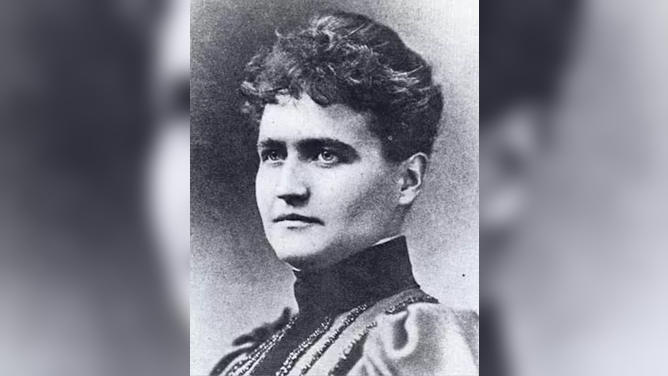
Eliza Ruhamah Scidmore.
(Washingtoniana Division / D.C. Public Library / FOX Weather)
A dispatch for National Geographic, Scidmore traveled to Japan in 1885 and fell in love with the country’s cherry trees.
"For 25 years, she ran a one-woman campaign, writing to almost anybody who could read to say, ‘We ought to plant these beautiful cherry blossom trees in Washington’," Malott said.
Scidmore’s campaign caught the ear of an important ally: then-first lady Helen Taft.
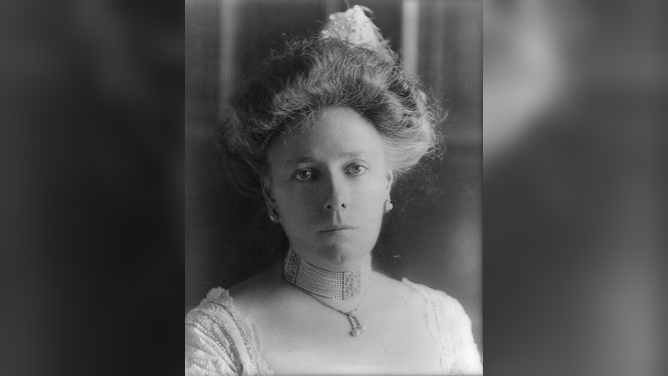
A portrait of First Lady Helen Taft, taken in 1909.
(LIbrary of Congress)
According to Malott, in 1910 Taft ordered the Army – as the National Park Service didn’t yet exist – to plant Japanese cherry trees in the nation’s capital. This batch of trees came from Pennsylvania and only numbered about 80 or 90.
Why Japan gave cherry trees to the US
Because of players such as Taft, Scidmore and Fairchild, the movement to bring cherry trees to the nation's capital was gaining momentum in the early 20th century.
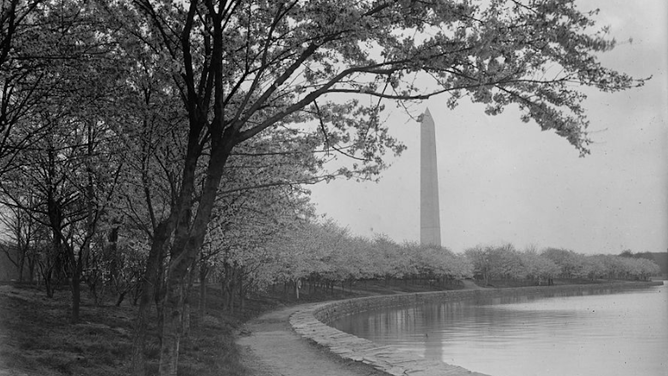
Japanese cherry trees line the walkway at the edge of the Tidal Basin, 1919.
(Detroit Publishing Co. / Library of Congress / FOX Weather)
This momentum then received a critical boost thanks to Jokichi Takamine. A Japanese biochemist living in New York, Takamine was known for having isolated the hormone adrenaline, which is now used today as epinephrine.
In addition to his work as a scientist, Takamine also ended up dabbling in a bit of international diplomacy by way of Japanese cherry trees.
"He was kind of a bridge between Japan and the United States," Malott said. "He thought it would be a wonderful thing for U.S.-Japan relations to bring the symbol of Japan, the cherry blossom trees, to America."
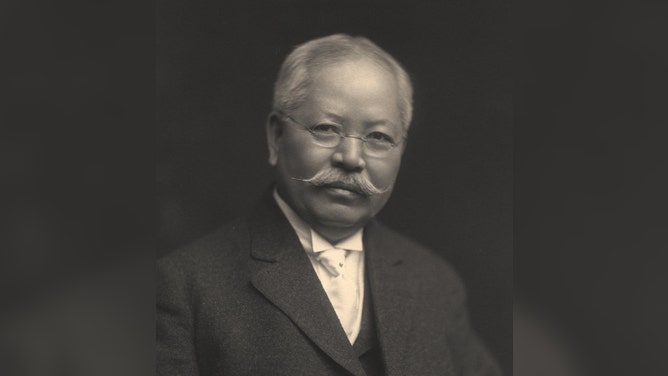
A portrait of biochemist Jokichi Takamine.
So, Takamine worked with the Japanese to give 6,000 Yoshino cherry trees to the U.S.
After an initial shipment of trees in 1910 that had to be destroyed due to an infestation, the final batch of cherry trees arrived in the U.S. in 1912. The U.S., in turn, gave Japan flowering dogwood trees, which are native to North America.
Malott said the trees were evenly divided between New York and Washington. The latter planted its share of trees around the Tidal Basin with first lady Taft and Viscountess Iwa Chinda, wife of the Japanese ambassador, planting the first two trees together.
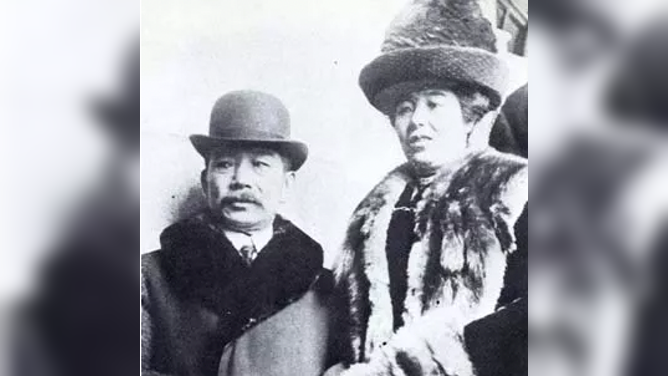
Viscountess Iwa Chinda stands next to her husband, the Japanese Ambassador.
(U.S. National Arboretum)
Ever since, the trees at the nation’s capital have risen to stardom.
"The reason our trees are so famous and so spectacular, I think, is because they're all in one place," Malott said. "There's nowhere else in the world where you can stand in one location and see 3,000 cherry blossom trees at the same time."
"Our trees are all together, and I think that is why it is such a magnificent site for everyone to see," she added.
Honoring the history of DC's cherry blossoms
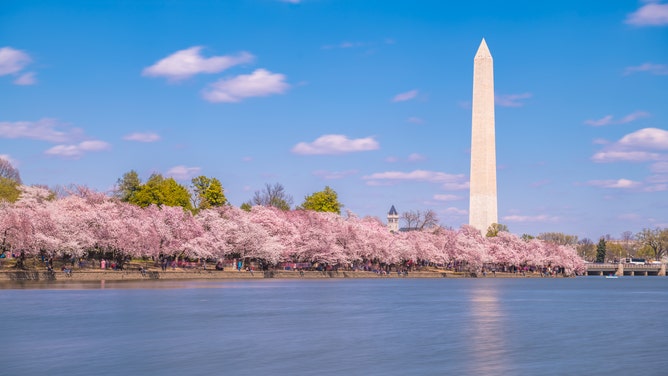
With the Washington Monument in the background, cherry trees bloom around the Tidal Basin.
(Doug Van Sant / National Cherry Blossom Festival / FOX Weather)
The cherry trees have continued to grow in the nation's capital, attracting more than 1.5 million visitors every year.
To honor the cherry blossoms, the annual National Cherry Blossom Festival was established in 1927, commemorating the floral and arboreal exchange between what were two budding superpowers in the early 20th century.
Shows, parades, costumes, a kite festival and more – often highlighting Japanese culture – are splashed with shades of pink in honor of the cherry trees.
"We continue to honor the history," Mayhew said. "We continue to ensure that we remember where this gift came from and the fact that it's an example of peace and international friendship."
Both on the world stage and at home in the nation’s capital, the trees have certainly made their mark.
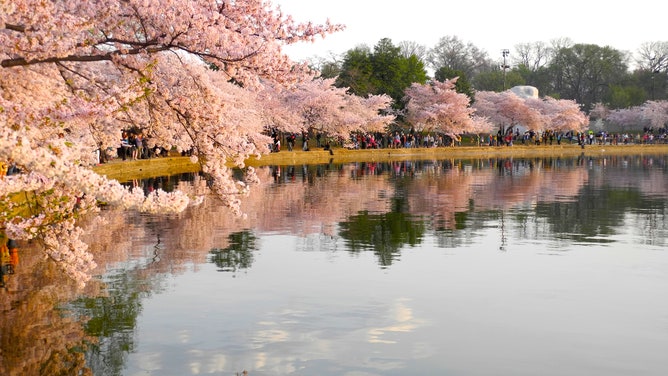
Cherry blossoms hang over the Tidal Basin.
(Steve Piacente / National Cherry Blossom Festival)
"There are many symbols in Washington, D.C. — we have the Capitol, the White House, the memorials, the shrines, but all of those symbols are buildings. They're made out of marble. All their statues are bronze or what have you," Malott said.
"But the cherry blossom trees that the Japanese gave us are the only living symbol of Washington, D.C." she added. "And no matter what happens — whether we have a tragedy, whether we have a pandemic — the cherry blossom trees are always there for us, and they come back to us in all their beauty every spring"
